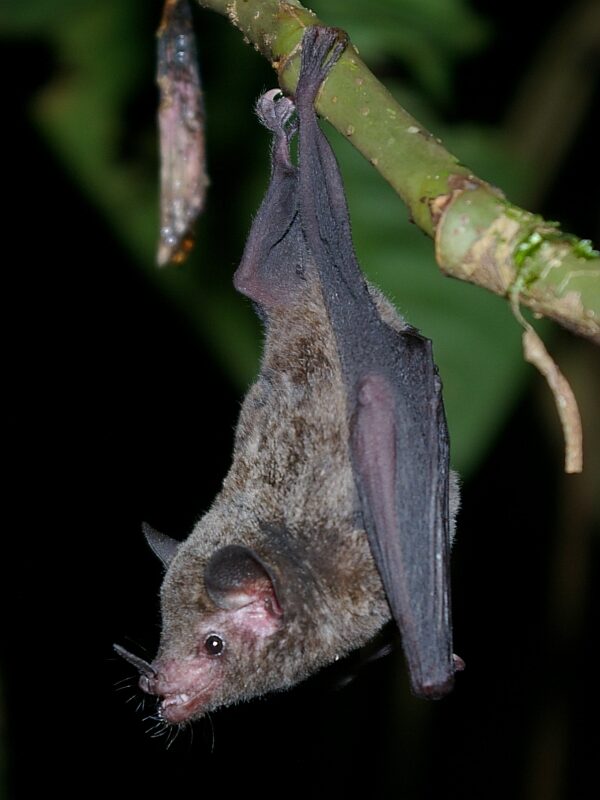
Glossophaga soricina
Pallas’s long-tongued bat
Description
Glossophaga soricina is a species of leaf-nosed bat found throughout Central and South America. This small bat is best known for its extraordinarily long tongue, which can extend to 150% of its body length, making it a highly efficient nectar feeder. Its fur is typically brown or gray, and it weighs between 9 and 11 grams.
Feeding Behavior and Pollination
This bat plays a vital role in pollinating many tropical plants, especially night-blooming flowers. It uses its long tongue to access nectar deep inside tubular flowers, inadvertently transferring pollen in the process. G. soricina is one of the fastest nectar feeders among mammals, capable of lapping nectar at up to 20 times per second.
Habitat and Distribution
Glossophaga soricina inhabits a variety of environments, including forests, savannas, and urban areas, from northern Mexico down to northern Argentina. It roosts in caves, hollow trees, buildings, and abandoned mines.
Echolocation and Navigation
Like other bats, G. soricina relies on echolocation to navigate and find food. However, it also uses vision and olfaction, particularly when foraging for flowers.
Ecological Importance
Glossophaga soricina is a keystone pollinator for many Neotropical plant species. Without its pollination services, the reproductive success of numerous native plants would be severely reduced.
Conservation Status
Currently listed as Least Concern by the IUCN, G. soricina has a wide distribution and is tolerant of habitat disturbance. However, continued deforestation and habitat loss could pose risks to its populations in some regions.
